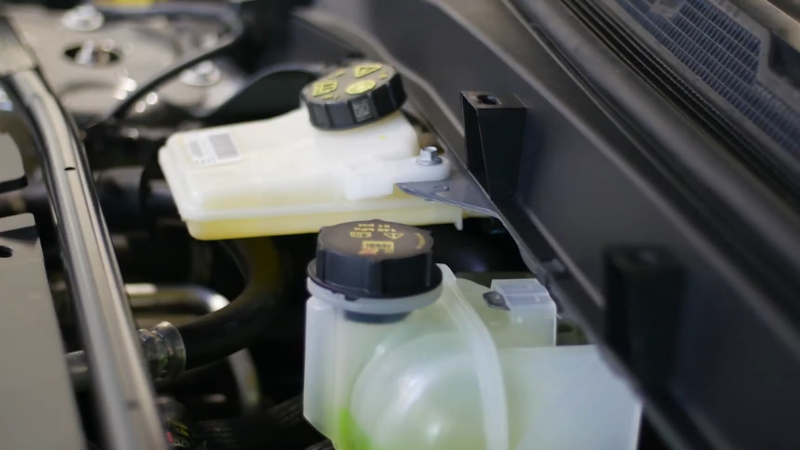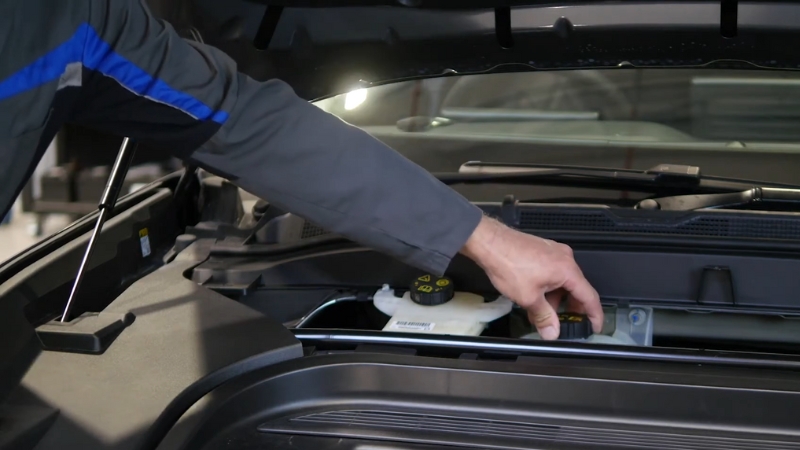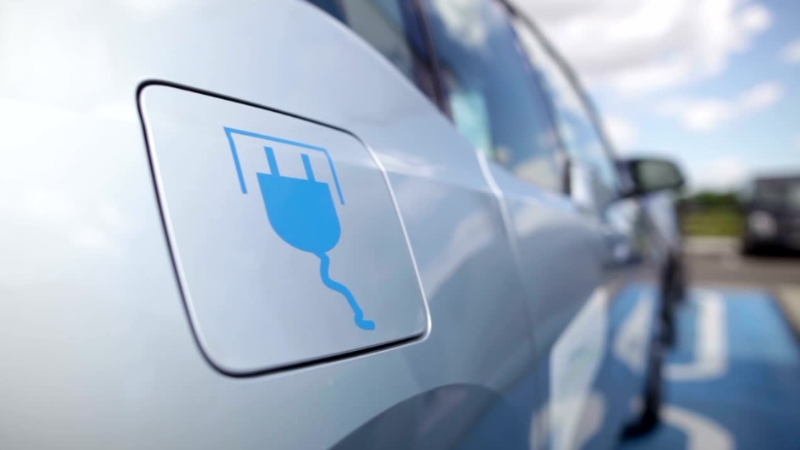Let’s just rip the band-aid off up front: no, electric cars don’t need oil changes. That whole routine, every 5,000 miles, book an appointment, wait for an hour while your car gets a fresh quart of oil and a courtesy vacuum, isn’t part of owning an EV.
So if you’ve been dreading that first oil change appointment in your new electric ride, you can officially forget it.
That’s one less calendar reminder and one more reason EVs are shaking up what we expect from car maintenance.
But here’s the thing, just because there’s no oil change doesn’t mean there’s zero maintenance. Electric vehicles still have fluids, parts, and systems that need attention.
The good news? Most of them last longer, cost less to maintain, and involve far fewer visits to the dealership.
So let’s get into it: what exactly do EVs need (and don’t need) when it comes to maintenance?
Why No Oil Change? What’s Different in an Electric Car
Traditional gas-powered cars rely on internal combustion engines—tiny controlled explosions firing off constantly, with pistons, valves, and other moving metal parts doing a high-speed, high-friction dance. To keep all that metal from grinding itself into dust, you need oil.
Not just any oil, either—one that stays stable at high temps, coats evenly, and doesn’t turn into sludge. Over time, this oil breaks down and collects metal shavings. That’s why you have to replace it regularly.
Now compare that to an electric motor. No combustion. No pistons. No valves. No oil-drenched ballet under the hood.
An EV’s electric motor spins magnets within a tightly wound copper coil, powered by a battery. The whole setup is much simpler and has far fewer moving parts.
So, while there is a very small amount of oil used internally to lubricate parts in the motor or gear reduction system, it’s sealed in and doesn’t require changing.
Unless you’re wrenching on quad-motor systems like in the Rivian R1T, oil just isn’t part of your regular EV life.
The Fluids You Do Need to Check in an EV
Even without the oil changes, there are still a few fluids electric vehicles rely on. Here are the ones that matter:
1. Coolant
View this post on Instagram
Most EVs use a liquid cooling system to regulate battery temperature and prevent overheating. This is crucial, batteries like to operate in a Goldilocks zone, not too hot and not too cold.
When to change:
Varies by model. For example:
If your car doesn’t specify a change interval, just have it checked every few years during scheduled service.
2. Brake Fluid
Even though EVs use regenerative braking (which helps extend the life of your actual brake pads), they still rely on conventional brake fluid for the hydraulic braking system.
When to change:
- Tesla: Check every 4 years.
- Kia EV6: Every 48,000 miles or 28 months.
- Ford Mach-E: Every 3 years or 30,000 miles.
Keep in mind, less frequent use doesn’t mean brake fluid won’t degrade—it absorbs moisture over time, which can reduce performance.
3. Windshield Washer Fluid
Nothing fancy here. Just top it off when it’s low. You’ll probably go through more of it in winter or pollen-heavy months.
What About the Electric Motor Oil?

You might’ve heard that EV motors use some oil for lubrication—and that’s technically true. But it’s a sealed system.
Think of it like the gearbox in a bicycle or the bearings in a treadmill motor. It’s in there, it’s doing its job quietly, and it’s not your problem unless something goes wrong.
Some vehicles, like the Ford Mustang Mach-E, call for an electric motor fluid replacement every 100,000 miles, but that’s about it.
Real Talk: What Will You Be Maintaining?
Here’s the big advantage of EV ownership: fewer parts = fewer problems. Let’s go down the checklist of regular maintenance items you’ll see across most EVs.
Regular Maintenance Tasks for EVs
Task
Frequency
Notes
Tire rotation
Every 6,000–10,000 miles
EVs are heavier, so rotate to avoid uneven wear.
Brake fluid replacement
Every 3–5 years
Less often than gas cars, thanks to regen braking.
Coolant flush
100,000+ miles (varies by model)
Only for battery and motor systems.
Wiper blade replacement
As needed
Depends on the weather and use.
Cabin air filter
Every 1–2 years
Keeps your cabin air clean.
Battery/motor fluid
Sometimes at 100k+ miles (rarely sooner)
Mostly sealed systems, infrequent service.
That’s the short list. Seriously.
Real-World Maintenance: What Owners Are Saying

I’ve had my Volkswagen ID.4 for over 45,000 miles. Here’s what I’ve needed:
- Tires: OEM rears were bald after 20,000 miles. Swapped to Michelin CrossClimate2s—more tread, better durability, same price.
- Cabin air filter: Swapped it myself for $18.
- Washer fluid: Topped it off maybe five times.
That’s it. No oil changes, no belts, no transmission services.
Now compare that to a traditional gas-powered car, where you might spend $60+ every 5,000 miles for an oil change, plus timing belt replacements, transmission flushes, spark plug replacements… it adds up fast.
The One Downside: Tire Wear
Electric cars weigh more than gas cars. That’s just the physics of hauling around a 1,000+ lb battery pack.
Combine that with instant torque, and yeah, you’re going to burn through tires faster.
For context:
That extra weight and torque can chew up softer, low-resistance tires. Your best bet is to upgrade to longer-lasting, higher-tread models.
The ones I used, Michelin CrossClimate2s, gave me another 30,000 miles and counting—and they still have life left.
Yeah, they might slightly lower your range or increase road noise, but the cost savings and peace of mind are worth it.
EV Maintenance Schedule Comparison Table
Battery coolant: 200,000 mi
EV Model
Tire Rotation
Cabin Filter
Brake Fluid
Coolant / Motor Fluid
A/C Desiccant
Tesla Model 3 (2024)
Every 6,250 miles
Every 2 years
Every 4 years
—
Every 4 years
Ford Mustang Mach-E
Every 10,000 miles
Every 2 years (est.)
Every 3 years
Motor fluid: 100,000 mi
Chevy Bolt EV (2023)
Every 7,500 miles
Every 22,500 miles
Every 5 years
Coolant: 150,000 mi or 5 years
Every 7 years
Tesla Model 3 (2024)
New Model 3 Performance launching today 🏎️
0-60 mph in 2.9
510 hp / 741 Nm
163 mph top speed
—
Performance-tuned chassis
Same quiet & comfortable cabin plus bespoke chassis hardware for improved stiffness and higher performance baseline.More power,… pic.twitter.com/kJKOuDpOTP
— Tesla (@Tesla) April 23, 2024
If you’re driving a newer Model 3, the main things to watch are tire wear and the cabin air filter. Tesla recommends rotating your tires every 6,250 miles to keep things wearing evenly (especially important given the torque).
Every couple of years, swap out the cabin air filter, and every four years, check the brake fluid and replace the A/C desiccant bag. That’s it—no major fluid changes unless there’s a problem.
Ford Mustang Mach-E (2024)
The Mach-E is just a bit more hands-on, but still wildly easy compared to an internal combustion car. You’re looking at tire rotations every 10,000 miles and brake fluid replacement every three years.
Then you’ve got two long-haul items: electric motor fluid replacement at 100,000 miles and battery coolant at a whopping 200,000 miles. Most owners won’t even hit that before selling or trading in.
Chevrolet Bolt EV (2023)
@socalchevroletOne-pedal driving allows you to stop and go using only the accelerator pedal. When you brake, the electric motor acts as a generator, converting kinetic energy from the vehicle’s forward motion into electricity. This electricity recharges the battery! Experience one-pedal driving at your local SoCal Chevrolet dealer.♬ original sound – SoCal Chevrolet
With the Bolt, tire rotations are recommended every 7,500 miles, which is about average for EVs. The cabin filter should be changed every 22,500 miles, and the brake fluid should be replaced every five years.
Chevy also recommends a coolant replacement every 150,000 miles or five years, whichever comes first. One unusual item here: replacing the A/C desiccant bag every seven years.
One Last Thing: The Battery Pack
Worried about the battery? You’re not alone. It’s the big-ticket item, and replacement costs can be eye-watering. But here’s the deal:
- Federal law requires 8-year, 100,000-mile warranties for EV batteries.
- Most packs are liquid-cooled and managed by sophisticated battery management systems (BMS) that optimize health, temperature, and charging patterns.
- Real-world reports show battery degradation is slow, think 10% after 8–10 years in many Teslas.
Unless you’re super unlucky or pushing your battery to extremes, you’re probably fine. And if something goes wrong? You’re covered under warranty for a long time.
TL;DR: Low-Maintenance, Not No-Maintenance

So, do electric cars need oil changes? Nope. And once you take that off the table, your EV maintenance list gets very short, very fast.
You’re looking at:
That’s it. No spark plugs. No mufflers. No timing belts. Just smooth, quiet miles and fewer trips to the shop.
If you’re used to planning your weekends around service appointments, driving an EV is going to feel like a breath of fresh air.
